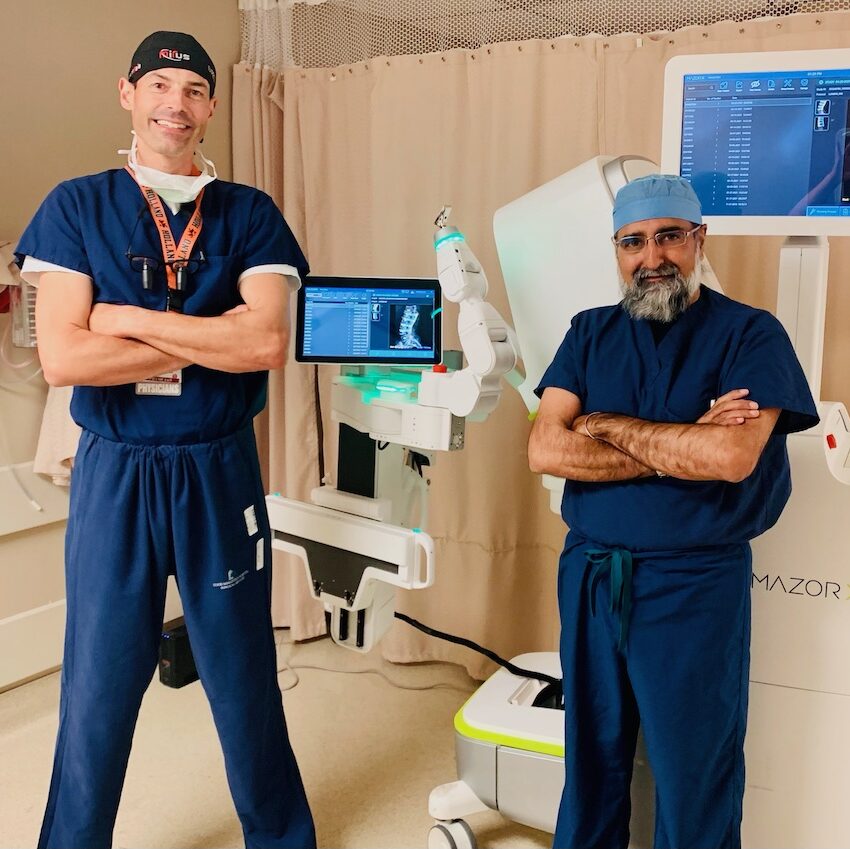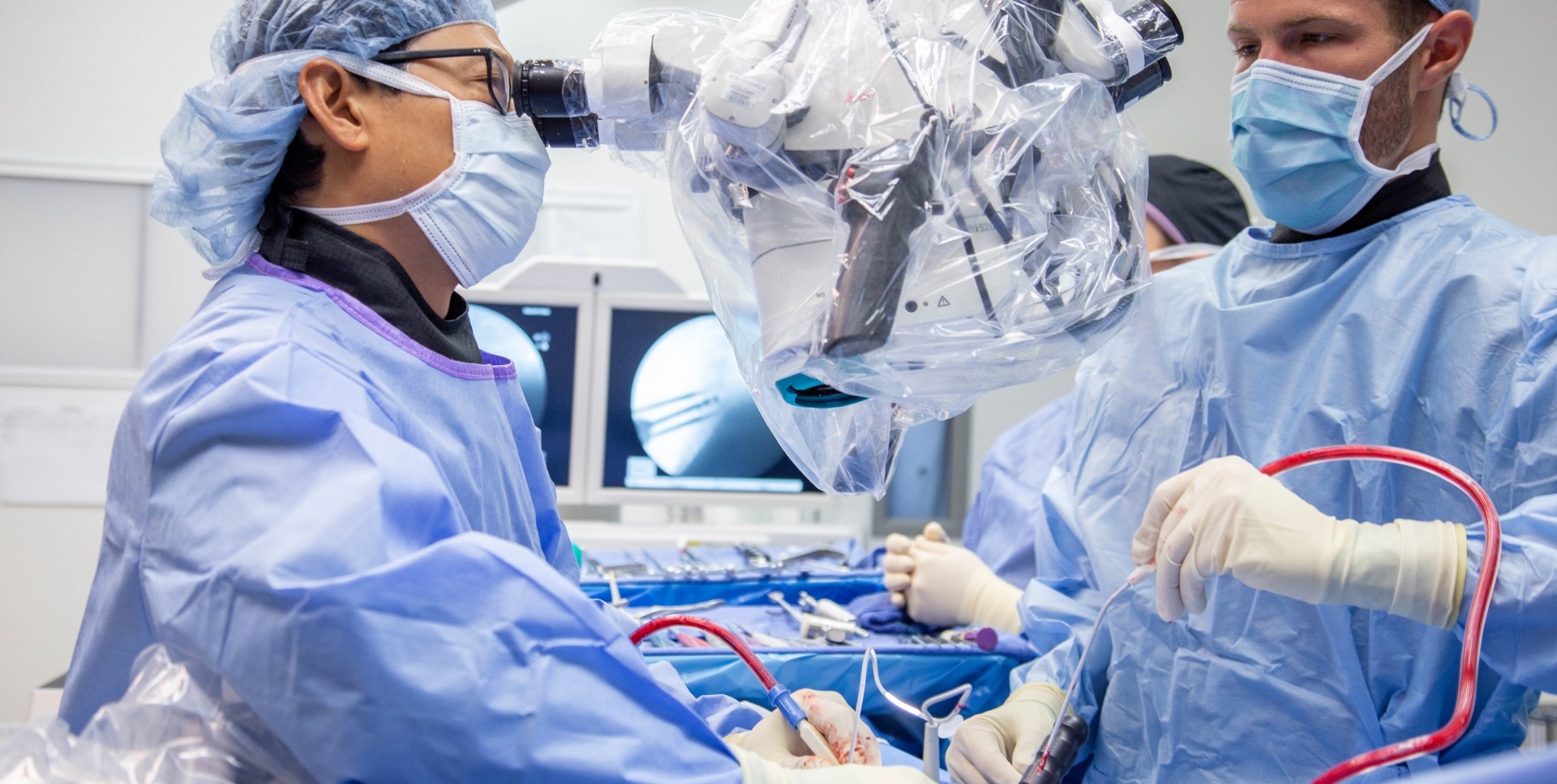Finding Affordable Options with the Best Spine Surgeons in St Louis MO
Finding Affordable Options with the Best Spine Surgeons in St Louis MO
Blog Article
What Spine Issues Generally Lead to Operation for Alleviation?
When conservative treatment options fail to supply sufficient alleviation from relentless pain and functional impairment,Spinal column concerns that call for surgical treatment typically develop. Problems such as herniated discs, spinal stenosis, and degenerative disc illness frequently bring about surgeries targeted at relieving symptoms and recovering movement. Recognizing the details indications for surgical treatment and the types of interventions readily available is crucial for both patients and doctor. As we discover the intricacies surrounding these back issues, it becomes apparent that the decision to pursue surgical alternatives is complex and warrants careful consideration.

Herniated Discs
When conservative treatments fail,Herniated discs are a common spinal condition that frequently leads to medical intervention. This condition takes place when the soft internal gel of a back disc protrudes via a tear in the tougher outer layer, potentially pressing neighboring nerves. Signs usually consist of local pain, radiating discomfort in the limbs, and neurological deficiencies such as prickling or weakness.

Surgical treatment intends to minimize pain and recover function by removing the herniated part of the disc or maintaining the influenced spinal section. While several clients experience significant renovation adhering to surgical procedure, it is vital to evaluate the benefits and threats in appointment with a certified spinal column expert. Eventually, timely intervention is important to stop further complications and improve lifestyle for individuals struggling with this devastating problem.
Back Constriction
Experiencing back stenosis can significantly affect an individual's flexibility and lifestyle. This condition takes place when the spinal canal tightens, placing pressure on the spinal cable and nerves. Frequently seen in the lumbar (reduced back) and cervical (neck) regions, spinal stenosis commonly results from degenerative modifications connected with aging, such as arthritis, disc herniation, or thickening of tendons.
Signs and symptoms of spinal constriction can vary, however they usually consist of pain, numbness, tingling, and weak point in the extremities. These symptoms might aggravate with activity or prolonged standing and typically boost with remainder. In severe situations, individuals may experience difficulties with equilibrium and coordination, bring about an increased threat of drops.
When conservative therapies, such as physical therapy, medications, and lifestyle modifications, fall short to minimize symptoms, surgical treatment might be taken into consideration. Procedures like laminectomy or spine combination purpose to decompress the afflicted nerves and maintain the spine. Early medical diagnosis and treatment are vital in managing spinal constriction successfully and preserving flexibility, eventually enhancing the client's general quality of life.
Spondylolisthesis
Spondylolisthesis happens when one vertebra slips ahead over the one listed below it, possibly causing spinal instability and nerve compression. This problem can occur from various variables, including congenital issues, degenerative changes, trauma, or repetitive stress and anxiety injuries. Signs and symptoms commonly consist of lower neck and back pain, stiffness, and radiating pain in the legs, which can substantially impact check my reference daily tasks and overall lifestyle.
Medical diagnosis commonly entails a complete professional analysis, imaging researches such as X-rays or MRI, and assessment of neurological function. The degree of slippage is classified right into grades, with greater qualities indicating much more extreme displacement and a higher chance of medical intervention.

Early diagnosis and ideal administration are vital in preventing further problems and boosting person outcomes. As spondylolisthesis can bring about persistent pain and impairment, prompt intervention is important for recovering back health and wellness.
Degenerative Disc Disease
Degenerative Disc Illness (DDD) is a problem defined by the progressive damage of the intervertebral discs, which act as vital shock absorbers between the website here vertebrae of the back. As these discs shed hydration and elasticity over time, they become less effective at supporting the vertebrae, resulting in boosted friction and tension on the spinal frameworks.
Patients with DDD often experience signs such as chronic back discomfort, tightness, and reduced mobility (best spine surgeons in st louis mo). The condition can additionally lead to nerve compression if the deteriorated discs bulge or herniate, resulting in radicular discomfort, weak point, or pins and needles in the arm or legs
Medical diagnosis normally involves a combination of checkups, imaging studies like MRI or CT scans, and person history to analyze the extent of disc degeneration and its impact on day-to-day tasks. Therapy choices array from traditional procedures, including physical therapy and discomfort administration, to more invasive treatments when conservative steps fall short. Surgical interventions, such as back blend or man-made disc substitute, may be shown for people with substantial discomfort and functional problems. On the whole, early intervention and customized administration techniques are vital for minimizing the impacts of DDD and enhancing client results.
Spinal Tumors
Spine lumps, which can be benign or deadly, represent an additional considerable root cause of back conditions that might demand medical treatment (best spine surgeons in st louis mo). These growths can come from within the here are the findings spine (main growths) or spread from various other parts of the body (secondary growths) Their visibility can cause different signs and symptoms, including local pain, neurological deficiencies, and alterations in wheelchair
Surgical treatment for back tumors commonly intends to ease symptoms by removing the tumor, maintaining the spine, and dealing with any compressive effects on the spine or nerves. Indicators for surgical treatment commonly consist of significant pain not receptive to conventional treatments, or neurological disability arising from the tumor's growth.

It is crucial for individuals providing with symptoms symptomatic of spinal lumps to go through thorough diagnostic evaluations, consisting of imaging researches and biopsies, to determine the suitable program of activity (best spine surgeons in st louis mo). Early discovery and treatment can substantially boost client results and quality of life
Conclusion
In recap, numerous back concerns, consisting of herniated discs, back stenosis, spondylolisthesis, degenerative disc disease, and spinal growths, often require surgical treatment when traditional treatments fall short to supply relief. These problems cause substantial pain and useful impairment, motivating the factor to consider of procedures such as discectomy, spine fusion, and laminectomy. Eventually, surgical choices goal to ease pain, enhance wheelchair, and restore quality of life for individuals affected by these crippling spine problems.
Problems such as herniated discs, back constriction, and degenerative disc illness often lead to medical treatments intended at recovering and reducing signs mobility.Herniated discs are a common spine condition that often leads to surgical intervention when traditional treatments fall short. Surgical treatments, such as back combination or artificial disc substitute, might be suggested for individuals with significant discomfort and functional impairment.Spine tumors, which can be malignant or benign, stand for an additional significant reason of back problems that might necessitate medical intervention.In summary, numerous back issues, consisting of herniated discs, spine constriction, spondylolisthesis, degenerative disc condition, and spinal tumors, commonly require surgical treatment when conservative therapies stop working to provide alleviation.
Report this page